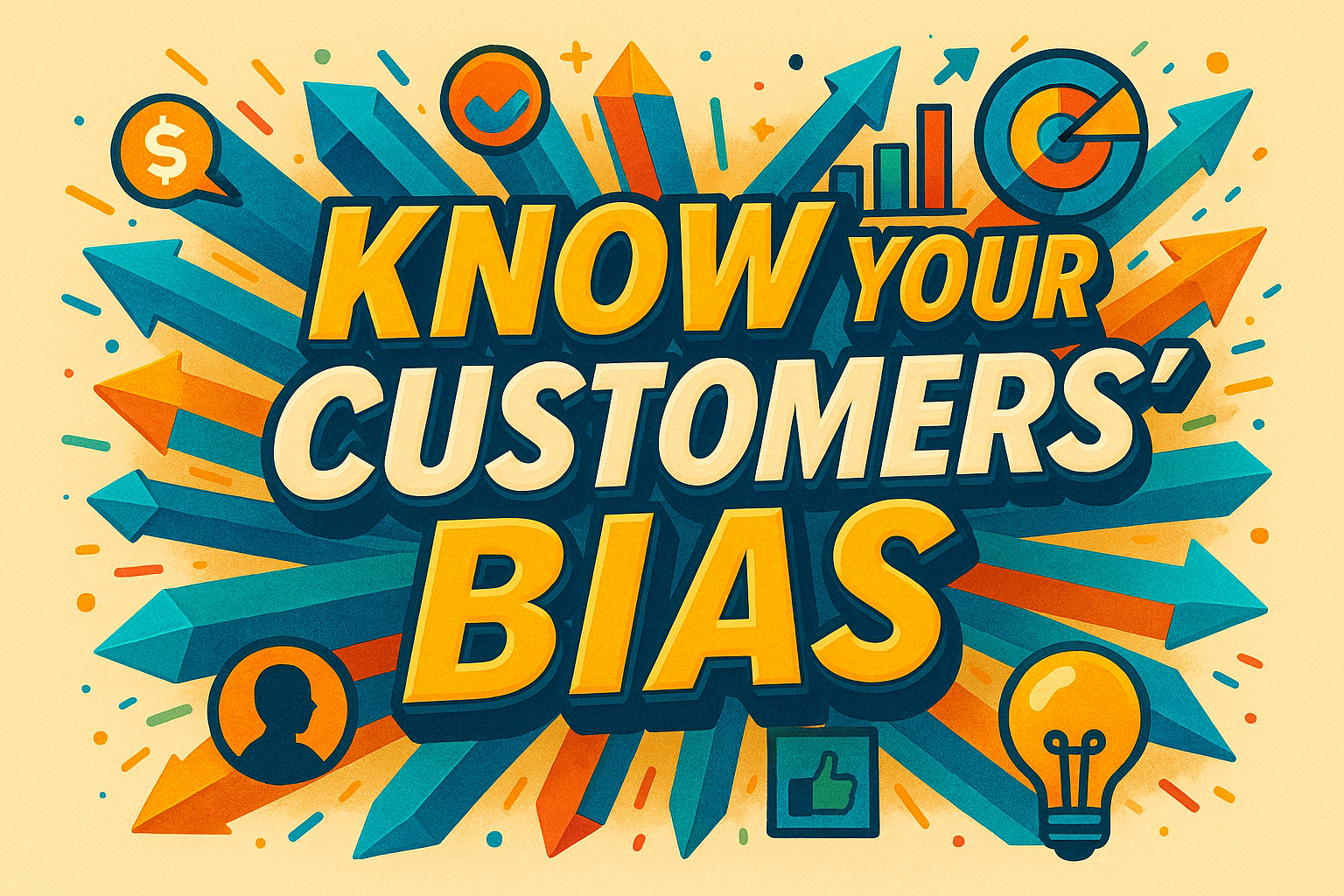You can improve your marketing strategies by understanding how cognitive biases influence consumer behavior. These biases are systematic patterns of deviation from norm or rationality in judgment.
They are mental shortcuts our brains use to simplify complex information and make decisions quickly. While these shortcuts can be useful in everyday life, they can also lead to predictable errors in judgment, which marketers can leverage (ethically) to influence consumer behavior.
One common bias is anchoring bias, where people rely too heavily on the first piece of information they receive (the “anchor”) when making decisions. In marketing, this can be used by presenting a high initial price to make subsequent discounts or lower-priced options seem more appealing. The initial price acts as the anchor, influencing the perceived value of other options.
The availability heuristic is another prevalent bias. It causes people to overestimate the likelihood of events that are easily recalled, often due to recent or vivid memories. Marketers can use this by highlighting recent successes, testimonials, or news stories related to their product or service, making it more salient in consumers’ minds.
Confirmation bias is the tendency to seek out information that confirms pre-existing beliefs and ignore information that contradicts them. Marketers can leverage this by targeting their messaging to reinforce the beliefs and values of their target audience. This creates a sense of connection and strengthens brand loyalty.
Loss aversion is the tendency to feel the pain of a loss more strongly than the pleasure of an equivalent gain. Marketers can use this by framing their messaging to emphasize what consumers stand to lose by not taking action. For example, highlighting the potential consequences of not using a particular product or service can be more effective than simply focusing on the benefits.
The bandwagon effect is the tendency to adopt behaviors or beliefs because many other people are doing so. This is closely related to social proof. Marketers can use this by showcasing the popularity of their product or service, highlighting positive reviews, or emphasizing large customer numbers.
The halo effect is the tendency for positive impressions in one area to influence opinions in other areas. For example, if a company is known for its excellent customer service, consumers may also assume that its products are of high quality. Marketers can leverage this by focusing on building a positive brand image in one area to influence overall perception.
Framing effect refers to how information is presented influences how it is perceived. For example, describing a product as “90% fat-free” is more appealing than saying it contains “10% fat,” even though the information is the same. Marketers can use this by carefully choosing their wording and presentation to create a more positive perception.
Understanding these and other cognitive biases provides marketers with valuable insights into consumer behavior. By ethically applying this knowledge, you can craft more persuasive messages, design more effective marketing campaigns, and ultimately drive better results. This understanding of mental shortcuts allows for more targeted and impactful marketing strategies.

About the Author
Mark Graham is The Performance Coach—a passionate leader, serious entrepreneur, and trusted advisor. With experience owning nine businesses across multiple industries and leading teams in top organizations, Mark brings real-world insight to every client interaction. As a Certified Professional Business Coach, Consultant, and Advisor, he’s committed to helping business owners achieve measurable, repeatable results. His mission is simple: elevate performance and drive growth that lasts.
Reach out to Mark @ 214.584.6262 or mark@theperformancecoach.biz

